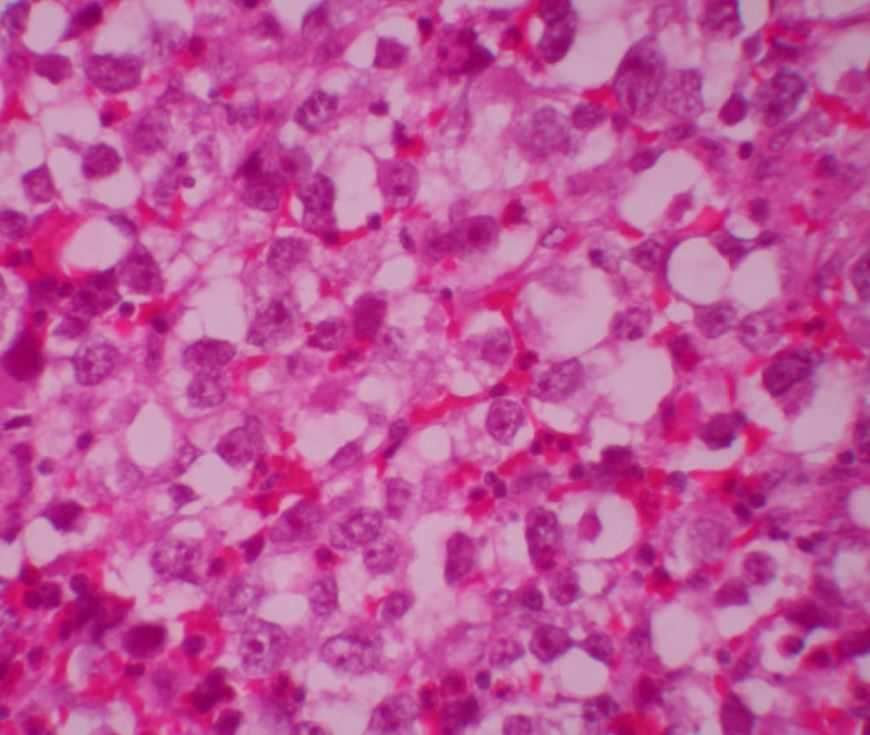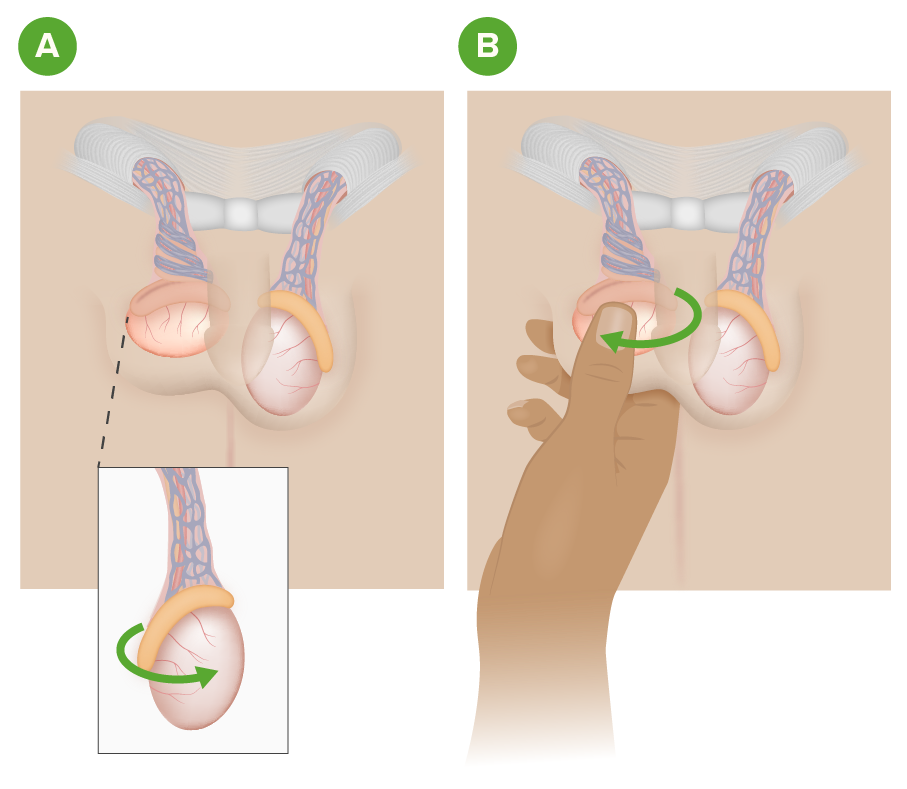Playlist
Show Playlist
Hide Playlist
Scrotal Imaging - Torsion and Testicular Carcinoma
00:01 So let's take a look at this case. 00:02 We have 4 ultrasound images of the scrotum here. 00:05 Let's take a look at each one of these individually. 00:08 So this is a normal ultrasound image without Doppler. 00:11 Just take a look at the echo texture of the testicle and compare it with the previous normal ones that we take a look at. 00:17 This a Doppler evaluation. 00:18 So a color Doppler evaluation of the left testicle. 00:22 Again you can see actually very little flow. 00:24 We have just a little blip of flow over in the corner here but there's really no other flow to that testicle. 00:28 This a spectral evaluation of the same testicle so you can see here there actually is no spectral wave form identified. 00:35 So not only is there no color, there's also no spectral wave form identified and then here is the comparison of the two testicles side by side. 00:41 So this is an example of the normal right testicle and then here we have the abnormal left testicle. 00:48 So the images demonstrate a slightly heterogeneous hypoechoic testicle which has no color, or spectral flow in Doppler evaluation. 00:55 And this is an example of testicular torsion. 00:58 In this patient the testicle looks like it is still salvageable. 01:01 It doesn't look like it's shrunken in size. 01:02 And although it's slightly hypoechoic, it's not significantly hypoechoic. 01:06 So this is a patient that immediately needs surgical detorsion. 01:10 So when we see testicular torsion on ultrasound, the next step is to call urology immediately for detorsion. 01:16 This is a surgical emergency. 01:18 And there is an 80 to a hundred percent chance of salvage if the testicle is detorsed within 6 hours. 01:24 There's really no chance of salvage unfortunately, if it has already been 24 hours. 01:28 It's important to remember that normal ultrasound does not exclude early or partial torsion. 01:33 Early torsion may have no ultrasound findings and partial torsion which is a testicle that torses and detorses may also not have any findings if you're catching it at a phase in which it is in its normal position. 01:45 So if we do have a clinical suspicion of torsion that we don't see on the ultrasound, it's important to remember to repeat that ultrasound within 4 hours. 01:52 So let's discuss testicular carcinoma. 01:55 Any solid mass that's within the testicle should raise a suspicion for carcinoma. 02:00 The first line of imaging in a patient that presents with the palpable mass is an ultrasound. So let's take a look at these ultrasound images. 02:08 These are both ultrasound images of the right testicle. 02:11 You can see here that this is a non-Doppler standard ultrasound image and then image on the right is a Doppler image which does show some color flow to the testicle. 02:21 Again compare these with some of the normal ones that we saw previously. 02:32 The testicle appears very heterogeneous. 02:34 There's a heterogeneous solid mass within it that has increased blood flow. 02:38 Testicular cancers can often metastasize to the para-aortic lymph nodes. 02:42 So whenever we see a testicular mass, the next step should always be to do a CT of the abdomen and pelvis to look for staging, to look for abnormal lymph nodes. 02:50 Lung metastases are also very common so a chest x-ray is usually done in conjunction. 02:55 This is an example of a patient that actually did have metastatic testicular carcinoma. 02:59 So this is a coronal CT image of the abdomen and you can see here, this is the normal aorta. 03:05 And then adjacent to it you see this small soft tissue densities which represent enlarged para-aortic lymph nodes and this is a common location for a testicular cancer to metastasize.
About the Lecture
The lecture Scrotal Imaging - Torsion and Testicular Carcinoma by Hetal Verma, MD is from the course Abdominal Radiology. It contains the following chapters:
- Torsion
- Testicular Carcinoma
Included Quiz Questions
Which of the following is TRUE about testicular torsion?
- It needs to be detorsed within the first 6 hours for salvage.
- Once torsion occurs, there is less than a 50% chance for salvage.
- A normal ultrasound demonstrating flow definitively excludes torsion.
- It most often occurs with an associated mass.
- Arterial flow is lost first, followed by the venous flow.
A 19-year-old man presents to the clinic with complaints of a painless swelling of his right testicle. On examination, a firm solid mass can be palpated in the testes. What is the next step in the management?
- Ultrasound
- Biopsy
- Repeat physical examination after 2 weeks
- MRI of the pelvis
- Reassurance
Which of the following is FALSE regarding testicular cancer?
- It presents as a homogeneous solid mass within the testicle with decreased blood flow.
- It often metastasizes to para-aortic lymph nodes.
- CT scan is the best imaging modality for staging.
- Lung metastases are common.
- It often presents as a painless firm mass.
Customer reviews
5,0 of 5 stars
| 5 Stars |
|
5 |
| 4 Stars |
|
0 |
| 3 Stars |
|
0 |
| 2 Stars |
|
0 |
| 1 Star |
|
0 |






